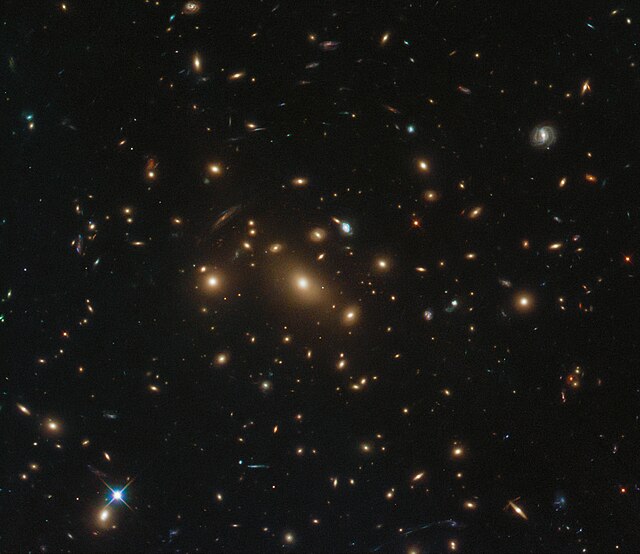SN 1006 was a supernova that is likely the brightest observed stellar event in recorded history, reaching an estimated −7.5 visual magnitude, and exceeding roughly sixteen times the brightness of Venus. Appearing between April 30 and May 1, 1006, in the constellation of Lupus, this "guest star" was described by observers across China, Japan, modern-day Iraq, Egypt, and Europe, and was possibly recorded in North American petroglyphs. Some reports state it was clearly visible in the daytime. Modern astronomers now consider its distance from Earth to be about 7,200 light-years or 2,200 parsecs.
False-colour X-ray image of SN 1006 supernova remnant
SN 1006 remnant expansion comparison
A supernova is a powerful and luminous explosion of a star. A supernova occurs during the last evolutionary stages of a massive star, or when a white dwarf is triggered into runaway nuclear fusion. The original object, called the progenitor, either collapses to a neutron star or black hole, or is completely destroyed to form a diffuse nebula. The peak optical luminosity of a supernova can be comparable to that of an entire galaxy before fading over several weeks or months.
SN 1994D (bright spot on the lower left), a type Ia supernova within its host galaxy, NGC 4526
The Crab Nebula is a pulsar wind nebula associated with the 1054 supernova.
A 1414 text cites a 1055 report: since "the baleful star appeared, a full year has passed and until now its brilliance has not faded".
2015 supernova in galaxy cluster RXC J0949.8+1707. In 2011, two supernovae were observed in the same face-on spiral galaxy.






